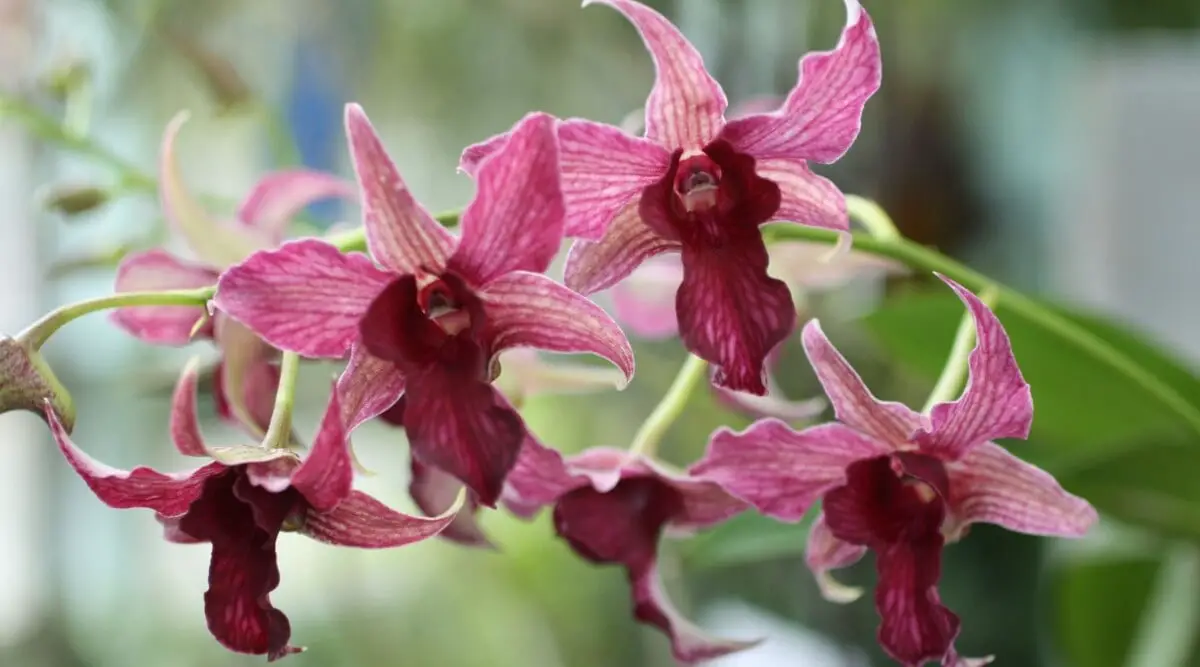Orchids are captivating flowers admired for their exotic beauty and long-lasting blooms. Many varieties can bloom throughout the year, making them a favorite among houseplant enthusiasts. A common concern for new orchid owners is whether their plant will produce new flowering stems once the old ones fade. The good news is that most orchids do generate new flower spikes after a resting period.
When an orchid finishes blooming, the existing flower stem (also called a spike) typically withers. After this, the plant redirects energy toward producing new roots and leaves. Eventually, under the right care conditions, a fresh stem will emerge—usually from the base of the plant or a node on the previous stem. This regrowth is a natural cycle and part of an orchid’s regular blooming pattern.
When Do Orchids Grow a New Flower Spike?

Orchids generally begin forming a new spike in late spring or early summer, though this can vary depending on the type of orchid and its growing environment. For example, Phalaenopsis orchids—the most commonly grown indoor variety—typically form spikes once temperatures begin to rise and daylight hours increase. This process can take several weeks to a few months.
The formation of a new flowering spike is an exciting development for any grower. If you observe a pointed green growth developing near the base of the orchid, it’s likely a new spike. This structure will eventually grow upward and produce buds that bloom into vibrant flowers. Patience and attentive care during this time can help ensure a healthy and beautiful bloom.
How Often Do Orchids Grow New Stems?
Most orchids grow new flower stems every 12 to 18 months. However, this timeline is not set in stone and varies by species, age, and environmental conditions. A healthy, mature orchid that receives ideal care may bloom annually or even more frequently. Conversely, stressed or neglected orchids may take much longer to produce a new stem.
Phalaenopsis orchids are known for their potential to rebloom multiple times from the same plant. Some species even produce new flower stems while the old ones are still green and viable. This variability makes it important to monitor your plant closely and understand its unique rhythm and needs.
What Affects the Growth of a New Orchid Stem?
Several factors influence how often an orchid grows new stems. Chief among them is the amount and quality of light the plant receives. Orchids require bright, indirect sunlight to thrive. Too much direct sun can scorch the leaves, while too little light can halt flowering altogether. A lack of light is one of the most common reasons an orchid will not produce a new spike.
Temperature also plays a crucial role. Many orchids initiate blooming when exposed to a slight drop in nighttime temperatures—typically around 55–65°F (13–18°C). Additionally, adequate watering, humidity levels, and balanced feeding with orchid-specific fertilizer all contribute to overall plant health and stem production.
How Long Does It Take for a New Orchid Stem to Grow?
The time it takes for a new orchid stem to grow depends on the variety, health of the plant, and growing conditions. In general, it may take anywhere from four to ten weeks for a new spike to grow and begin producing buds. For Phalaenopsis orchids, the new stem starts as a small nub and slowly extends upward, forming buds over several weeks.
Growth may seem slow at first, but once conditions are optimal, the spike will elongate and develop buds. If your orchid is healthy and in a supportive environment, you can expect flowering to occur within three months from the emergence of the new stem.
Will Orchids Always Produce a New Stem?
Yes, orchids will usually grow new flower stems, but not always right away. If your orchid is not currently producing a new spike, it could simply be in a resting phase. Orchids naturally go through dormant periods where energy is focused on root and leaf development rather than blooming. This is completely normal and not cause for concern.
To encourage stem growth, ensure your orchid is receiving bright, indirect light and is placed in a location with moderate humidity and stable temperatures. Consistent care and patience are essential. In some cases, orchids may even produce multiple spikes from the same plant if conditions are favorable.
How to Encourage Your Orchid to Grow New Flower Stems
Encouraging your orchid to grow new stems begins with proper light. Place your orchid near a bright window with filtered light, such as an east or south-facing window with sheer curtains. Avoid direct sunlight, which can scorch the leaves and prevent stem formation.
Water your orchid appropriately by allowing the top inch of the potting medium to dry out before rewatering. Overwatering can lead to root rot, while underwatering can stunt growth. A consistent watering routine promotes overall plant health, helping to initiate stem production.
Use a high-quality orchid fertilizer once a month. A balanced formula with equal nitrogen, phosphorus, and potassium is ideal. During the blooming season, you may switch to a fertilizer with higher phosphorus to promote flower development. Fertilizing regularly will provide the nutrients necessary to support new spike growth and future blooms.
How to Tell If Your Orchid is Growing a New Stem
There are several signs that your orchid is producing a new stem. A key indicator is a small green protrusion near the base of the plant. New flower spikes are usually bright green and pointed, growing upright in a consistent direction. Unlike aerial roots, which are silvery and round, a flower spike is flatter and more tapered at the tip.
You may also notice the formation of nodes along the new growth. These nodes will eventually develop into flower buds. As the spike matures, it will grow taller and begin to branch out. Early detection of new stem growth allows you to adjust care—such as increasing humidity or fine-tuning light exposure—to support blooming.
Why Isn’t My Orchid Growing a New Stem?
If your orchid is not growing a new stem, it could be due to several reasons. A lack of light is the most common issue. Orchids need bright, indirect light for healthy growth and blooming. If your plant is located in a low-light area, consider moving it to a brighter location or supplementing with grow lights.
Inconsistent watering and feeding practices can also inhibit growth. Orchids thrive on stable conditions. Avoid overwatering or underwatering, and ensure your plant is receiving balanced fertilizer. Additionally, temperature stress, such as sudden changes in warmth or exposure to cold drafts, can delay blooming.
Finally, if your orchid was recently repotted, it may need time to adjust. Repotting can cause temporary shock, slowing down the plant’s development. Allow your orchid a few months to acclimate to its new environment, and with proper care, it should begin producing a new stem.
How to Get Multiple Flower Stems on an Orchid
Getting multiple flower stems from an orchid requires advanced care techniques. First, choose a large, mature orchid with a healthy root system. Young or underdeveloped plants are less likely to produce more than one spike at a time. Use a pot that allows enough space for the roots to expand—ideally at least 12 inches wide.
Next, focus on light exposure. Orchids with multiple spikes often receive optimal light conditions throughout the year. Try to maintain 12–14 hours of filtered light per day. You can supplement with artificial grow lights during winter months.
Fertilize regularly using a bloom-boosting formula, and ensure your orchid is in a stable, warm environment with consistent humidity. With time and attention, many orchids can produce two or even three spikes per flowering cycle.
Should You Cut Back Old Orchid Stems?
Yes, once the flowers have faded and the stem begins to yellow or brown, it’s best to trim it back. Use sterilized scissors to cut the stem just above a node or down to the base of the plant, depending on your orchid type and whether you hope for a side shoot. Cutting encourages the orchid to redirect energy toward new root or spike formation.
Avoid cutting green, healthy stems prematurely, as some varieties—like Phalaenopsis—can produce a secondary spike from a node on the same stem. Observe your orchid carefully before making cuts to determine the best approach.
Can Orchids Rebloom From the Same Stem?
Phalaenopsis orchids are known to rebloom from the same stem if it’s still green and healthy. In this case, a side shoot may emerge from a dormant node below the original blooms. However, other orchid types like Dendrobium or Cattleya usually produce new stems for each bloom cycle and don’t rebloom from the same spike.
If your orchid’s stem is brown or shriveled, it won’t produce new flowers, and it’s safe to trim it off. Always adjust care after blooming by providing extra nutrients and maintaining optimal light and humidity conditions to encourage future spikes.
Are You Seeing a New Orchid Root or a New Stem?
Distinguishing between new roots and stems is crucial. Orchid roots are typically silvery with green tips and grow outward or downward. They may curve and have a thicker, rounded appearance. In contrast, flower stems are pointed, green, and grow upward from between the leaves.
If you see new growth and are unsure whether it’s a root or a stem, monitor its direction and shape. Roots tend to head toward the potting media, while flower spikes point upward and develop nodes. Identifying the correct structure early on can help you adjust care for optimal bloom success.






